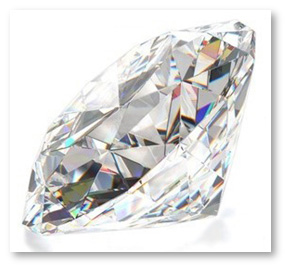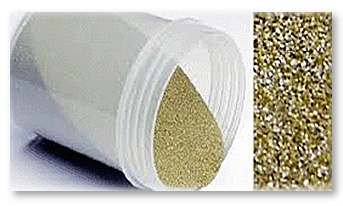Synthetic Diamonds – Different from Diamond Simulants
Why Lab-grown or Synthetic diamonds?
We all know that reserves of natural diamond are only going to reduce (provided new mines are not discovered). On the other hand, demand of this gem which is being used for adornment, industrial and gemological purpose is rapidly increasing.
So, perhaps synthetic diamonds (also termed as man-made diamonds or artificial diamonds) can be used to improve the skewed supply/demand ratio.
But are these real diamonds? Yes, of course! These man made diamonds are not fake. These are real diamonds with all properties same as mined-diamonds. Only difference lies in the way they are formed. While, natural diamonds are formed over billion of years of journey, their synthetic cousins are created in labs over the period of few days.
Brief History
From late nineteenth century to around first quarter of twentieth century, many scientists tried their hand to create diamond in their labs. However, none of them got success.
In 1941, GE Diamond Project was started in collaboration with General Electric and Carborundum companies to produce diamond synthetically. However, due to World War II project had to be stopped mid-way. But it resumed in 1951, and the first commercially successful synthesis of diamond was announced on February 15th, 1955. The crystal that was created had same qualities as natural diamond.
Is the term "Synthetic" misleading?
According to Federal Trade Commission (FTC), term "synthetic" used for man-made diamonds can be misleading to consumers, making them to associate man-made diamonds with diamond imitation stones. So, according to FTC, terms like - "laboratory-created", "laboratory-grown" and "[manufacturer]-created" are more appropriate to describe true nature of man-made diamonds.
How are lab-created diamonds made?
Diamonds are created in labs using following 2 processes:
- High Pressure High Temperature process (HPHT Synthetics)
- Chemical Vapor Deposition process (CVD Synthetics)
In both the above crystal growth processes, a small diamond seed is subjected to favorable environment for growth of diamond - atom by atom. You can go through special techniques page to read in more detail about these lab creation methods.
Properties of man-made diamond
Man-made diamonds have more or less the same physical, chemical and optical properties as that of natural diamonds. Properties of a lab grown crystal depend on its manufacturing process. It can be inferior or superior to natural diamond.
Some lab-grown diamonds are even harder than natural diamonds. By hardness we mean the resistance to scratching - hardness of diamond is 10 which is measured on Mohs Scale. Hardness of a lab-cultivated diamond depends on its transparency and crystalline perfection, with flawless and clean crystal being the hardest.
Difference between lab-grown and natural diamonds
| Lab Grown Diamond | Natural Diamond |
|---|---|
| Grown in man-made laboratory. | Originates from mines. |
| It is created in around 7 to 10 days, depending on production technique. | Takes millions of years to form. |
| Recently created in 1955 by General Electric. | Long history attached to it. Discovered around 3000 years back. |
| Fewer flaws, as it is grown under controlled conditions. It usually has only cracks, cavities and abrasions. | More flaws and inclusions (natural defects like black spots, clouds). |
| Available at around one-third the price of natural diamond. | It’s expensive, priced on the basis of quality, color, size, rarity. |
| Generally grown in small sizes. Size more than 1 carat is rare. | Found in varying sizes, large and small. |
Uses of Lab grown Diamond
- Due to its hardness, it is used in cutting and machine tools.
- It is used as diamond-tipped drill bits and saws.
- In powdery form, it is used as an abrasive.
- In arms and ammunition.
- Used in runways due to its high resistance to scratching.
- In future, lab-grown diamonds can be used in micro-chips as replacement of silicon. One of the reasons being silicon cannot withstand high temperatures and radiations. Due to this usage of silicon-based chips has limitations in outer space, core of nuclear reactors, etc.
Biggest Advantage of Lab-made Diamonds
Well the biggest plus that a lab-created diamond offers over natural mined diamond is: it has much lower carbon-footprint and there is no question of it being conflict diamond. While, man-made diamonds are created in laboratories without any exploitation of natural resources and environment, these are also sure to be free from human rights abuse.
Even though there are plenty of checks nowadays to make diamond trade free of blood diamonds, but still these unwanted diamonds do show their presence in international diamond supply chain.
So, if you are someone with big-no-to-blood-diamonds, then lab-made diamonds can be a good choice. Because with these diamonds you can be rest assured that you are not sporting your favorite piece with blood stain of someone on it. Also, let's not forget that man-made diamonds are many fold cheaper than their natural cousins.
Is it possible to detect lab-grown from natural diamonds?
It
is very hard to differentiate between cultivated and mined diamonds
because of the same physical, chemical and optical properties. Also, due
to cultivated stones available at far lesser price compared to natural
diamonds, it has often been found that some unscrupulous dealers have
mixed synthetics in naturals' lots to gain more profit.
However, with advancement in technology and due to concerns in diamond industry regarding mixing of lab-grown with naturals, special spectroscopic tools have been developed that can be used to detect the difference between two varieties.
Man-made diamonds have definitely stamped a big mark on industry and recent developments in processing techniques have undoubtedly brought them quite close to natural diamonds. Nonetheless, with simultaneous advancements in technology, diamond grading labs like GIA have come up with equally innovative techniques to identify man-made diamonds from natural stones.
Return from Synthetic Diamonds to Diamond Formation page
Return from Synthetic Diamonds to Diamond Jewelry homepage
I hope you'll not mind sharing this on Twitter, Facebook and with everyone else :)
Feel free to share if something is in your mind and want it to be covered on this site.
My Newsletter
Did you liked this article? Sign-up my FREE weekly newsletter and I'll send you more awesome new additions on this website along with latest jewelry happenings around the world, and download my Jewelry Design Album for FREE!
 |
|




